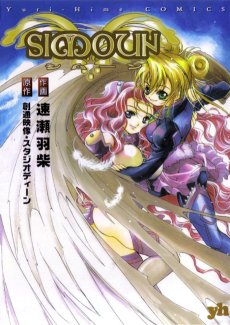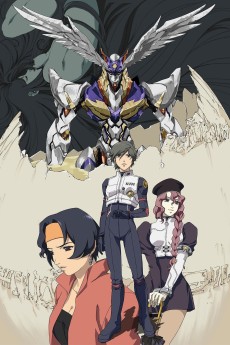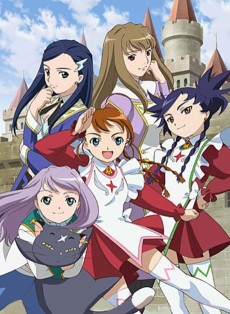SIMOUN
STATUS
COMPLETE
EPISODES
26
RELEASE
September 25, 2006
LENGTH
23 min
DESCRIPTION
In the peaceful theocracy of Simulicram, everyone is born female. At age 19, each maiden undergoes a special ceremony where she chooses her sex. However, only Pairs of maiden priestesses can synchronize with the ancient flying ships known as Simoun needed to defend Simulicram. These Pairs refrain from undergoing the ceremony as long as they wish to keep piloting their Simoun.
Aer is recruited to be a Simoun pilot after a terrifying attack by an enemy nation decimates the squadron known as Chor Tempest. To earn her wings she needs to find her way into the heart of Neviril, Regina of Chor Tempest. But Neviril's heart still belongs to her previous Pair, lost in the battle when she attempted a forbidden Simoun maneuver.
(Source: Media Blasters)
CAST
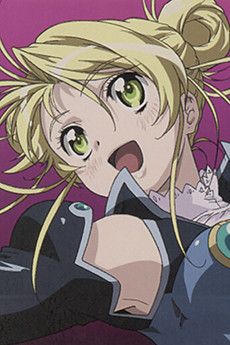
Aer

Michi Niino
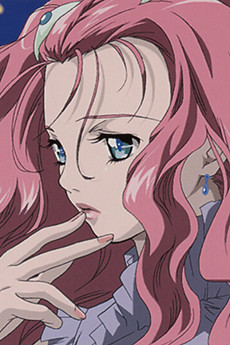
Neviril
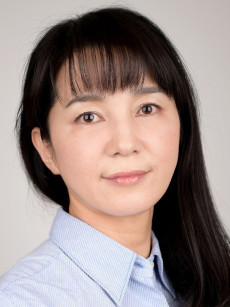
Rieko Takahashi
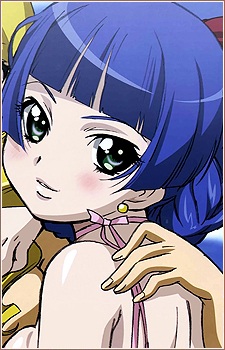
Mamiina

Rika Morinaga

Yun
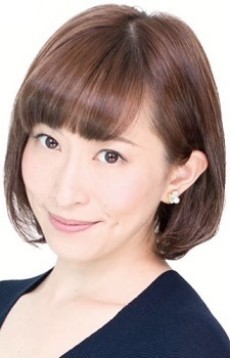
Kaori Nazuka

Morinas
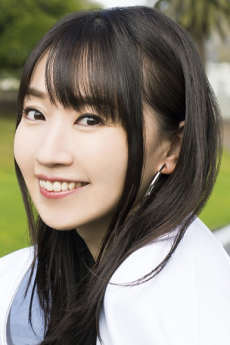
Nana Mizuki

Rimone

Mamiko Noto

Floe

Michiru Aizawa

Paraietta

Ami Koshimizu

Rodoreamon
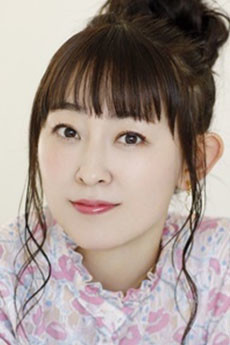
Mikako Takahashi
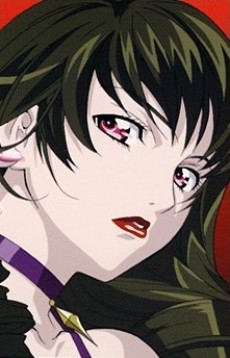
Dominura

Yukana

Kaim

Michiko Hosokoshi

Alty

Megumi Toyoguchi
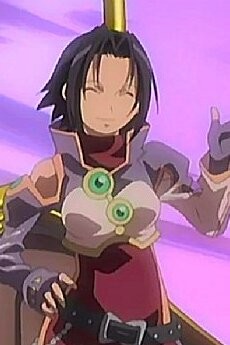
Vura

Ai Hayasaka

Wapourif

Fumie Mizusawa

Guragief

Houko Kuwashima

Amuria

Eri Kitamura
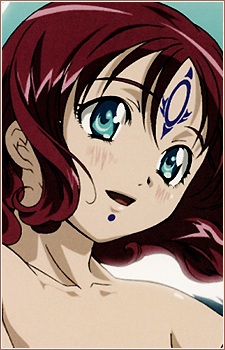
Anglas
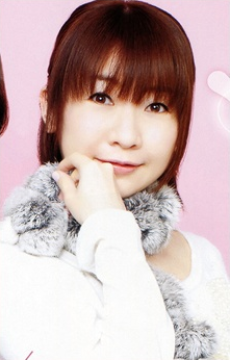
Miyu Matsuki
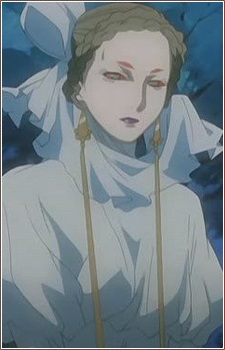
Onashia

Sakiko Tamagawa

Anubituf

Reiko Kiuchi
EPISODES
Dubbed

Not available on crunchyroll
RELATED TO SIMOUN
REVIEWS

planetJane
77/100"Which sky shall we fly to next?"Continue on AniListAll of my reviews contain **spoilers** for the reviewed material. This is your only warning.

The gender binary works for almost no person on Earth. The national war machines of the world, even fewer. In the abstract sense; Simoun is about this simple pair of facts, and how they relate to the broader systems that define our lives. Moreover, it is about how those systems can be dealt with; through adaption, rejection, self-sacrifice, self-love, and self-knowledge.
 It’s possible I’m betraying a small reference pool here, but I find Simoun a true original. I’m guilty of overusing terms like “unusual” and I call enough anime “a bit of a weird one” that you could conceivably make a drinking game out of it while reading my blog. But qualifiers like “a bit” are unnecessary here. I don’t think I’ve seen much else even remotely like Simoun. Frankly, I struggle for reference points. “A shoujo-inflected political war drama with gender identity issues” doesn’t exactly roll off the tongue. And indeed, Simoun is defined by some very unusual stylistic tentpoles.
We have here a deliberately slow and ponderous pace, sketchbook fantasy architecture, a decidedly odd setting with flying vehicles rendered in airbrushed mid-aughts CGI (the titular simouns themselves), and a surprisingly complex….well, complex of fantastic gender roles and associated dynamics. All this is soundtracked, naturally, with a combination of very of-its-time canned breaks and four-on-the-floor rhythms, and a shocking amount of violins. It’s a lot to take in.
It’s possible I’m betraying a small reference pool here, but I find Simoun a true original. I’m guilty of overusing terms like “unusual” and I call enough anime “a bit of a weird one” that you could conceivably make a drinking game out of it while reading my blog. But qualifiers like “a bit” are unnecessary here. I don’t think I’ve seen much else even remotely like Simoun. Frankly, I struggle for reference points. “A shoujo-inflected political war drama with gender identity issues” doesn’t exactly roll off the tongue. And indeed, Simoun is defined by some very unusual stylistic tentpoles.
We have here a deliberately slow and ponderous pace, sketchbook fantasy architecture, a decidedly odd setting with flying vehicles rendered in airbrushed mid-aughts CGI (the titular simouns themselves), and a surprisingly complex….well, complex of fantastic gender roles and associated dynamics. All this is soundtracked, naturally, with a combination of very of-its-time canned breaks and four-on-the-floor rhythms, and a shocking amount of violins. It’s a lot to take in.
 At its heart, Simoun is both the story of its cast, all of whom are young girls in a military unit called the Chor Tempest, and how they are affected both by the social systems that they live in and each other. If that sounds a bit heady, that’s because Simoun itself often leans that way. This is a show with a lot on its mind, and it spends all twenty-six of its episodes pouring it out.
Getting into the nitty-gritty of what Simoun is about requires first explaining a facet of its worldbuilding. Though I called the show’s protagonists “young girls” in the previous paragraph, that’s not actually entirely correct. Simoun‘s cast consists mostly of young people belonging to a social caste of their country, The Theocracy of Simulacrum, called sibyllae (singular: sibylla) who are perhaps best thought of as being a kind of nonbinary, although even this is, admittedly, a simplification. Sibyllae pilot the titular simouns, both as ritual instruments in their role as priestesses and as weapons of war in an ongoing conflict with first one and then two other powers; the Archipelago of Argentum and The Plumbum Highlands. Two pilots occupy each simoun, in a bond called a “pair” that is both tactical and emotional. Sometimes merely friendly, other times romantic. On a few occasions it’s even adversarial.
At its heart, Simoun is both the story of its cast, all of whom are young girls in a military unit called the Chor Tempest, and how they are affected both by the social systems that they live in and each other. If that sounds a bit heady, that’s because Simoun itself often leans that way. This is a show with a lot on its mind, and it spends all twenty-six of its episodes pouring it out.
Getting into the nitty-gritty of what Simoun is about requires first explaining a facet of its worldbuilding. Though I called the show’s protagonists “young girls” in the previous paragraph, that’s not actually entirely correct. Simoun‘s cast consists mostly of young people belonging to a social caste of their country, The Theocracy of Simulacrum, called sibyllae (singular: sibylla) who are perhaps best thought of as being a kind of nonbinary, although even this is, admittedly, a simplification. Sibyllae pilot the titular simouns, both as ritual instruments in their role as priestesses and as weapons of war in an ongoing conflict with first one and then two other powers; the Archipelago of Argentum and The Plumbum Highlands. Two pilots occupy each simoun, in a bond called a “pair” that is both tactical and emotional. Sometimes merely friendly, other times romantic. On a few occasions it’s even adversarial.
 Once they reach maturity, sibyllae (and indeed, all of Simulacrum’s citizens) are expected to retire from their role and visit a magic fountain, where they will choose to either become male or “remain” (the terminology is somewhat odd, but can probably be chalked up to the age of the series) female. Alternately, if they are uncommitted, they can have the fountain itself (via its representative, a priestess figure named Onashia) choose for them. Much ceremony surrounds this, and the reasons individual sibyllae give for their choice varies wildly; some want to remain with their simoun pair or some other romantic interest and thus choose to become male, others seek specific jobs more associated with one gender than another, and so on.
In the series’ second episode, a sibylla named Elly has the fountain choose her gender for her. We don’t see much, but we learn as she does that she is to become male. Almost immediately, she cries out in anguish and breaks down crying. A lack of commitment on the part of someone who is still essentially a child is punished by being forced into a role that does not fit her and that she is not happy with. To say it’s “hard to watch” is an understatement. It’s horrifying. And it’s one Simoun calls back to more than once over the course of its run. It is the first major indication that all of these invented systemics are buildup to a real core, not just aesthetics or aimless experimentation.
Once they reach maturity, sibyllae (and indeed, all of Simulacrum’s citizens) are expected to retire from their role and visit a magic fountain, where they will choose to either become male or “remain” (the terminology is somewhat odd, but can probably be chalked up to the age of the series) female. Alternately, if they are uncommitted, they can have the fountain itself (via its representative, a priestess figure named Onashia) choose for them. Much ceremony surrounds this, and the reasons individual sibyllae give for their choice varies wildly; some want to remain with their simoun pair or some other romantic interest and thus choose to become male, others seek specific jobs more associated with one gender than another, and so on.
In the series’ second episode, a sibylla named Elly has the fountain choose her gender for her. We don’t see much, but we learn as she does that she is to become male. Almost immediately, she cries out in anguish and breaks down crying. A lack of commitment on the part of someone who is still essentially a child is punished by being forced into a role that does not fit her and that she is not happy with. To say it’s “hard to watch” is an understatement. It’s horrifying. And it’s one Simoun calls back to more than once over the course of its run. It is the first major indication that all of these invented systemics are buildup to a real core, not just aesthetics or aimless experimentation.
 The sibyllae occupy a role that has no direct, obvious real-world counterpart, which has the benefit of halting any preconceived notions on the part of the viewer. Any notions that do form will be quickly picked apart by the characters themselves. Almost to a one, every character in the show has a distinct opinion of the syballae, none moreso than the pilots themselves. Some see the sibyllae primarily as priestesses and lament the combat role they’ve had to take up in wartime. For others, such as Mamina, it’s the entire point; a chance to prove oneself and rise above one’s station. Others still, such as Aeru, who is probably the closest thing Simoun has to a proper protagonist, primarily serve in order to avoid the inevitability of the fountain.
The sibyllae occupy a role that has no direct, obvious real-world counterpart, which has the benefit of halting any preconceived notions on the part of the viewer. Any notions that do form will be quickly picked apart by the characters themselves. Almost to a one, every character in the show has a distinct opinion of the syballae, none moreso than the pilots themselves. Some see the sibyllae primarily as priestesses and lament the combat role they’ve had to take up in wartime. For others, such as Mamina, it’s the entire point; a chance to prove oneself and rise above one’s station. Others still, such as Aeru, who is probably the closest thing Simoun has to a proper protagonist, primarily serve in order to avoid the inevitability of the fountain.
 Some are just as lost as the audience; Neviril, around whom much of the series revolves, is engaged with a desperate search for purpose after the loss of her partner in the first episode. This is all without even mentioning the complex and thorny dynamic of having a bunch of children who are essentially miko pilot the simoun themselves. Given that the vehicles are, when deployed at their full strength, functionally magical nuclear bombers. These are just some of the many issues that Simoun picks at numerous times over the course of its run.
It’s unsurprising then that tonally, Simoun is iron and rain. The foggy atmosphere tints the deep regret, unrequited love, and crises of faith that permeate the series. As it progresses, conflicting ideals of religious and noble duty clash with those of militaristic nationalism, the individuals that espouse these ideas caught in between. Simoun is heavy as lead. This is not a show you watch for fun.
Some are just as lost as the audience; Neviril, around whom much of the series revolves, is engaged with a desperate search for purpose after the loss of her partner in the first episode. This is all without even mentioning the complex and thorny dynamic of having a bunch of children who are essentially miko pilot the simoun themselves. Given that the vehicles are, when deployed at their full strength, functionally magical nuclear bombers. These are just some of the many issues that Simoun picks at numerous times over the course of its run.
It’s unsurprising then that tonally, Simoun is iron and rain. The foggy atmosphere tints the deep regret, unrequited love, and crises of faith that permeate the series. As it progresses, conflicting ideals of religious and noble duty clash with those of militaristic nationalism, the individuals that espouse these ideas caught in between. Simoun is heavy as lead. This is not a show you watch for fun.
 This means that the show does have a few, not weaknesses exactly, but quirks. The way it handles big emotional moments is almost more reminiscent of dramatic theater than anything else. But make no mistake, that stately sense of gravitas is absolutely capable of sending chills up the spines of the unprepared. It’s a trait the series shares with some other big-picture war dramas, your Gundams and such, making it the thing that most easily places Simoun within the obvious broader context of its medium.
As for actual weaknesses, it wouldn’t be inaccurate to call Simoun something of a slog. It’s not pointless, which is what that term usually implies, but it is definitely not anyone’s idea of a breezy watch. There are very few moments of emotional catharsis or even many pleasant interludes during the entire run of the show, these only really coming to fruition in Simoun‘s final half dozen episodes. It works well with the series’ thematic core, but it doesn’t make it any easier to stomach on a moment to moment basis and I must confess my millennial ADHD brain found itself struggling to keep my attention focused on the screen at times. It’s almost impressive, given that Simoun is only a fairly short 26 episodes. Simoun also looks very much of its time. I grew to appreciate its mid-2000s charm over the course of watching it, but I would be unsurprised if others were less charitable.
This means that the show does have a few, not weaknesses exactly, but quirks. The way it handles big emotional moments is almost more reminiscent of dramatic theater than anything else. But make no mistake, that stately sense of gravitas is absolutely capable of sending chills up the spines of the unprepared. It’s a trait the series shares with some other big-picture war dramas, your Gundams and such, making it the thing that most easily places Simoun within the obvious broader context of its medium.
As for actual weaknesses, it wouldn’t be inaccurate to call Simoun something of a slog. It’s not pointless, which is what that term usually implies, but it is definitely not anyone’s idea of a breezy watch. There are very few moments of emotional catharsis or even many pleasant interludes during the entire run of the show, these only really coming to fruition in Simoun‘s final half dozen episodes. It works well with the series’ thematic core, but it doesn’t make it any easier to stomach on a moment to moment basis and I must confess my millennial ADHD brain found itself struggling to keep my attention focused on the screen at times. It’s almost impressive, given that Simoun is only a fairly short 26 episodes. Simoun also looks very much of its time. I grew to appreciate its mid-2000s charm over the course of watching it, but I would be unsurprised if others were less charitable.
 So those are the ups and downs. It is fair then to ask where all of this goes, and the truth is that Simoun‘s greatest strength is that by spending all of that time on worldbuilding and similar details, it earns an incredible amount of leeway to take the entire thing wherever it pleases. Simoun‘s true core thesis then, is wonderful. The series broadly rejects all notion of heroic narrative; the ostensible main military conflict fizzles out with four episodes left to go. Its’ finale is not about any grand confrontation, but about how the sibyllae who remain deal with the end of the war, and consequently the end of their special relevance to the Theocracy.
So those are the ups and downs. It is fair then to ask where all of this goes, and the truth is that Simoun‘s greatest strength is that by spending all of that time on worldbuilding and similar details, it earns an incredible amount of leeway to take the entire thing wherever it pleases. Simoun‘s true core thesis then, is wonderful. The series broadly rejects all notion of heroic narrative; the ostensible main military conflict fizzles out with four episodes left to go. Its’ finale is not about any grand confrontation, but about how the sibyllae who remain deal with the end of the war, and consequently the end of their special relevance to the Theocracy.
 All of this is broadly a metaphor for coming of age. A thematic line that many anime explore, but Simoun‘s closest compatriot, at least from my own pool of knowledge, is none other than Revolutionary Girl Utena. The two share something that looks like fatalism from a distance but is both more practical and more resonant up close. Unlike many other anime, Simoun offers no dramatic moment of breaking the system. The system, in a way, wins, in that it continues to exist even after the war. The sibyllae’s own choices are where the revolution lies; for many, to go to the fountain, for one, to replace Onashia as its keeper, and for two, something far stranger, and not unlike Utena and Anthy’s great escape at the end of their own series’ film. It is a revolution not of the world, but the self.
One could argue that this thesis is incomplete, maybe even irresponsible. I would counter that no single work of art is obligated to depict all aspects of the human condition on its own. We need lovers as much as fighters, and Simoun is decidedly for the former. This school of thematic material lives on in anime to this very day for that exact reason.
For the flaws it admittedly does have, Simoun‘s final catharsis is wonderfully well-earned. The hours of our lives tick on, and somewhere far beyond them spin two eternal maidens, in a land of hope and dance.
All of this is broadly a metaphor for coming of age. A thematic line that many anime explore, but Simoun‘s closest compatriot, at least from my own pool of knowledge, is none other than Revolutionary Girl Utena. The two share something that looks like fatalism from a distance but is both more practical and more resonant up close. Unlike many other anime, Simoun offers no dramatic moment of breaking the system. The system, in a way, wins, in that it continues to exist even after the war. The sibyllae’s own choices are where the revolution lies; for many, to go to the fountain, for one, to replace Onashia as its keeper, and for two, something far stranger, and not unlike Utena and Anthy’s great escape at the end of their own series’ film. It is a revolution not of the world, but the self.
One could argue that this thesis is incomplete, maybe even irresponsible. I would counter that no single work of art is obligated to depict all aspects of the human condition on its own. We need lovers as much as fighters, and Simoun is decidedly for the former. This school of thematic material lives on in anime to this very day for that exact reason.
For the flaws it admittedly does have, Simoun‘s final catharsis is wonderfully well-earned. The hours of our lives tick on, and somewhere far beyond them spin two eternal maidens, in a land of hope and dance.
**Notes & Disclaimers** Usage of Anilist's review feature does not constitute endorsement for Anilist as a platform, the Anilist community or any individual member thereof, or any of Anilist's policies or rules. All views expressed are solely my own opinions and conclusions and should not be taken to reflect the opinions of any other persons, groups, or organizations. All text is owned by me. Do not duplicate without permission. All images are owned by their original copyright holders.
SIMILAR ANIMES YOU MAY LIKE
 MOVIE Action11-nin Iru!
MOVIE Action11-nin Iru! ANIME ActionLast Exile
ANIME ActionLast Exile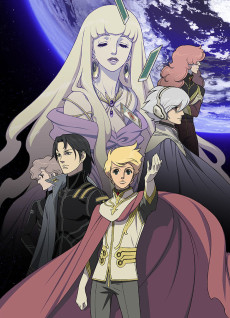 ANIME ActionTerra e... (TV)
ANIME ActionTerra e... (TV)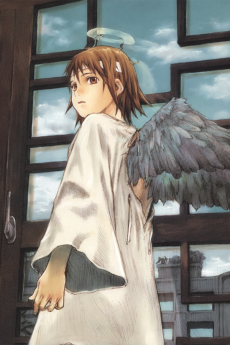 ANIME DramaHaibane Renmei
ANIME DramaHaibane Renmei ANIME ActionGUNSLINGER GIRL
ANIME ActionGUNSLINGER GIRL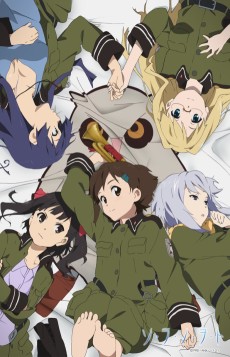 ANIME MusicSo Ra No Wo To
ANIME MusicSo Ra No Wo To ANIME DramaSoukou no Strain
ANIME DramaSoukou no Strain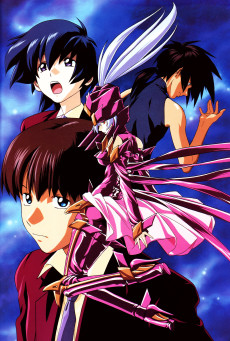 ANIME DramaMugen no Ryvius
ANIME DramaMugen no Ryvius
SCORE
- (3.5/5)
MORE INFO
Ended inSeptember 25, 2006
Main Studio Studio DEEN
Favorited by 125 Users


